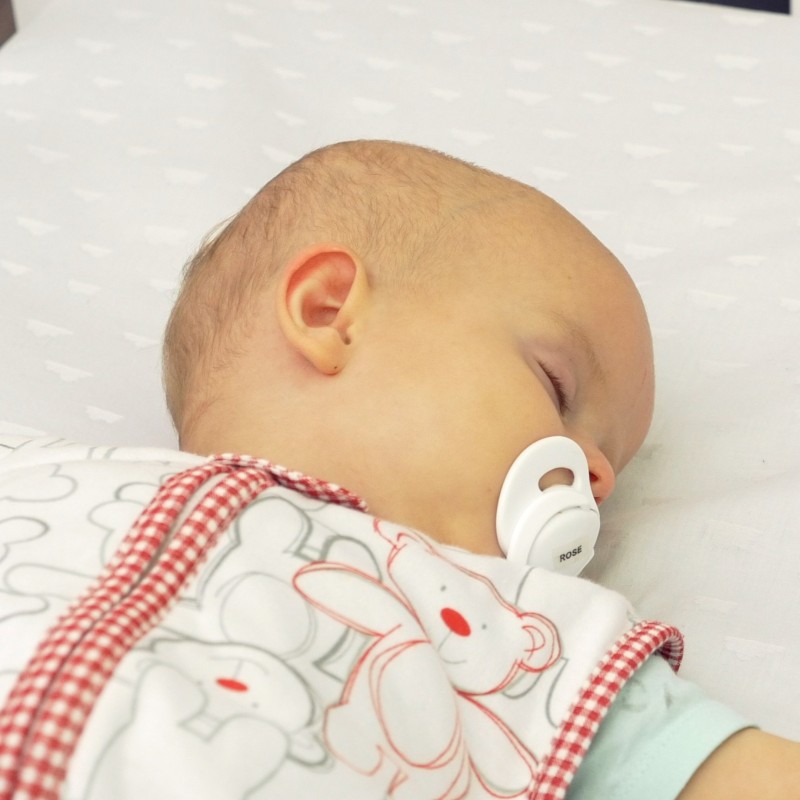Why is sleeping babies on firm surfaces so important and what are the risks if you don’t?

Red Nose helps to shed some light on this important topic so you can make safer choices for your bub.
With the range of products marketed to parents and carers that promise to give you and your baby a peaceful night’s sleep, it’s no wonder families are confused about where to begin and how to make safe choices.
Many parents believe that creating soft, cosy and nest-like environments for their babies to sleep is the way to ensure comfort. This is not the case. These spaces are dangerous and there have been tragic outcomes, including death.
Soft sleep surfaces are dangerous for babies!
Babies, particularly those under 12 months, are more vulnerable to sleep-related injury and death because they are physically different to older children and adults. Babies have a larger head in compared to their body size, and the occiput (the bump at the back of the head) is more pronounced. Babies are also still developing head control and neck musculature. This means that babies who are not on a firm, flat surface can end up with their chin resting on their chest. Your baby’s soft and flexible airway can be blocked in this position.
TIP: Try resting your chin on your own chest to help you understand the restricted breathing!
Soft surfaces also increase the risk of suffocation. For example, the walls of a nest or padded bumpers on a cot or bassinet may block baby’s airway if they turn their face into the padding.
Similarly, babies who roll over while laying on a soft surface may end up with their mouth and nose pressed into the surface. This can lead to tragic outcomes as it can obstruct their breathing causing suffocation.
It can also allow exhaled air to build up around the baby’s mouth and nose, causing “rebreathing” of carbon dioxide which can be fatal.
Do not introduce further hazards to your baby’s sleep space.
These hazards include:
- items for sleep that are too soft,
- an inclined or elevated sleep space
Hazards such as theses can increase the risk of sudden unexpected infant death (SIDS) or sleep accidents.
How to create a Safe Sleep environment!
Cots or Travel cots
Red Nose recommends placing your baby to sleep in a cot or a travel cot because all new and pre-loved cots and travel cots sold in Australia must meet the current Australian and New Zealand Standards (AS/NZS 2172) and AS/NZS 2195). Look for a label or sticker that says that it complies with the mandatory standard and when in doubt, ask!
Never place your baby in a cot or portable cot that does not meet these standards.
Bassinets
Bassinets may also be used to sleep the baby in the parents’ or caregivers’ bedroom for the first few months of life. Be careful! There are currently no mandatory safety standards for bassinets in Australia. Always follow the guidelines from the Australian Competition and Consumer Commission (ACCC) when choosing a safer bassinet.
REMEMBER: it is important to transfer baby from a bassinet to a cot as soon as they show signs that they might start rolling soon.
Selecting a safe mattress for your cot or portable cot
A safe mattress is one that is the right size for the cot, portable cot or bassinet.
It should be:
- firm,
- clean,
- in good condition,
- and placed flat (not tilted or elevated).
DO: select a cot mattress that complies with the size and depth recommended by the manufacturer of the cot. A baby can get stuck in gaps between a poor fitting mattress and the cot sides. This is especially dangerous if the baby’s face becomes trapped and covered, or their neck is restricted in any way. Make sure there is no more than a 20mm gap between the mattress and the cot sides and ends.
DO: Choose a cot mattress that is compliant with the AS/NZS Voluntary Standard (AS/NZS 8811.1:2013 Methods of testing infant products – Sleep Surfaces - Test for firmness).
DO: Remove plastic packaging from the mattress and always make sure that the waterproof mattress protector is strong and a tight fit.
DO: Use the firm, clean and well-fitting mattress that is supplied with the portable cot.
DON’T: Add soft bedding such as nests, bumpers, sheepskins, additional padding, additional mattresses or pillows to the cot or portable cot.
Remember: Always put baby to sleep on their back on a firm, flat surface, and never add soft bedding to your baby’s sleep environment.
Want more tips on keeping your baby safe? Head to our Safe Sleep Advice Hub. Or Call our Safe Sleep Advice for Parent and Carers line on 1300 998 698 9am to 5pm (AEST) Monday to Friday
Help Red Nose Australia to save little lives and support grieving families - donate now.
Last modified: 23/4/24
